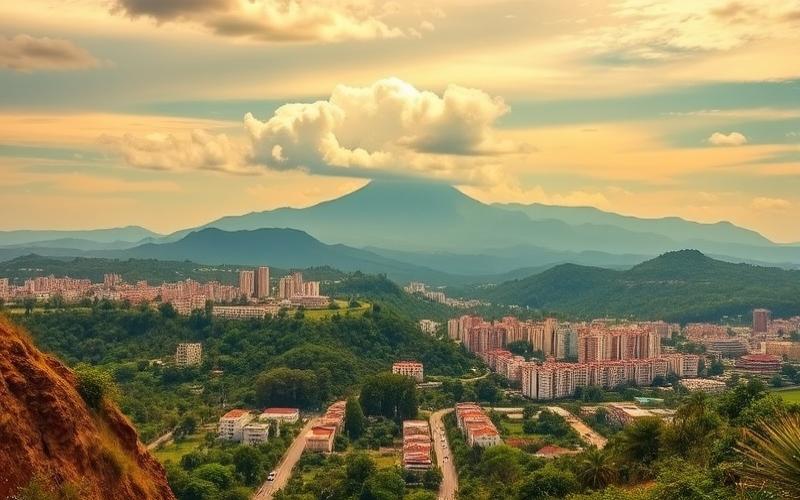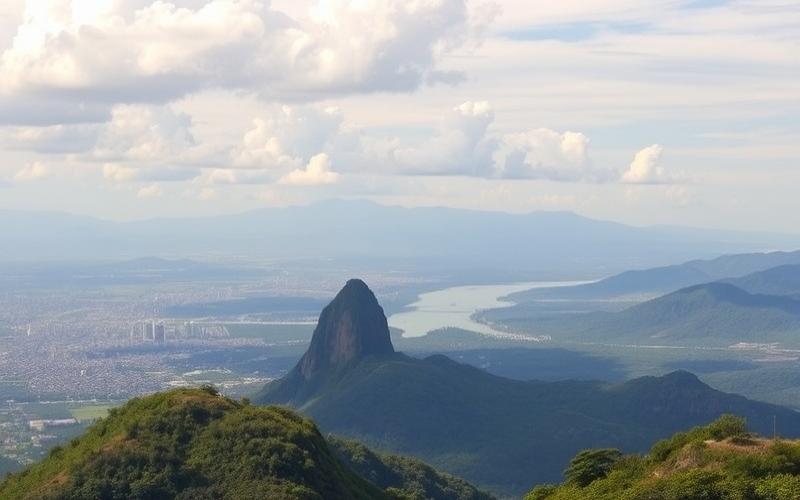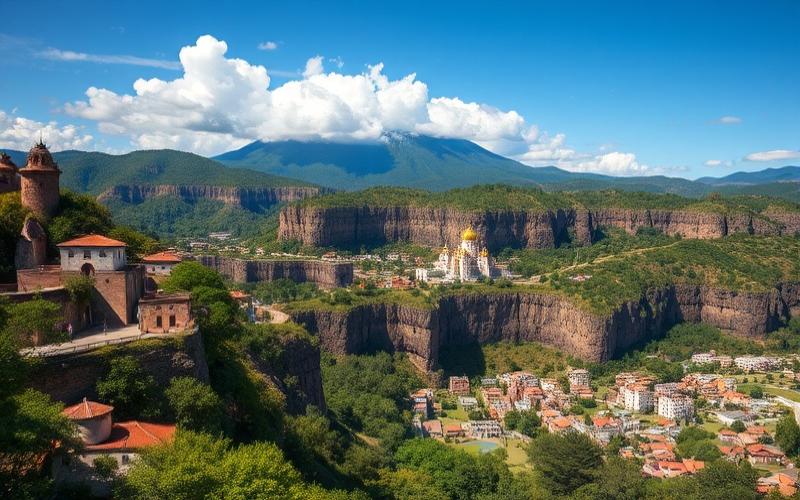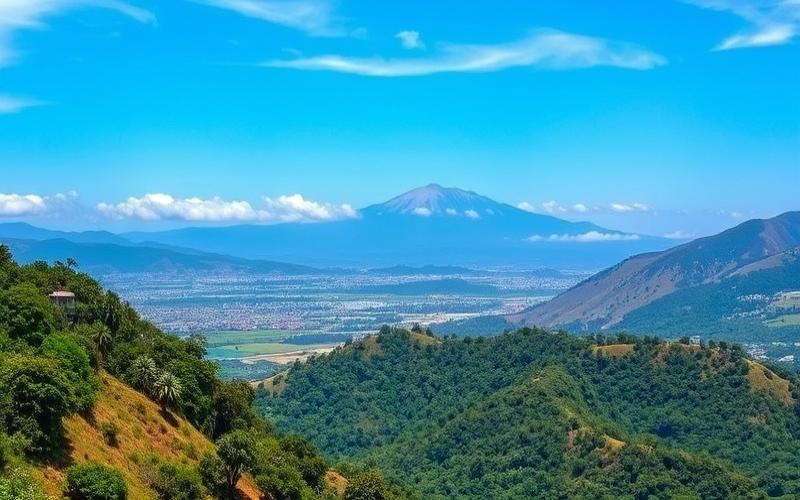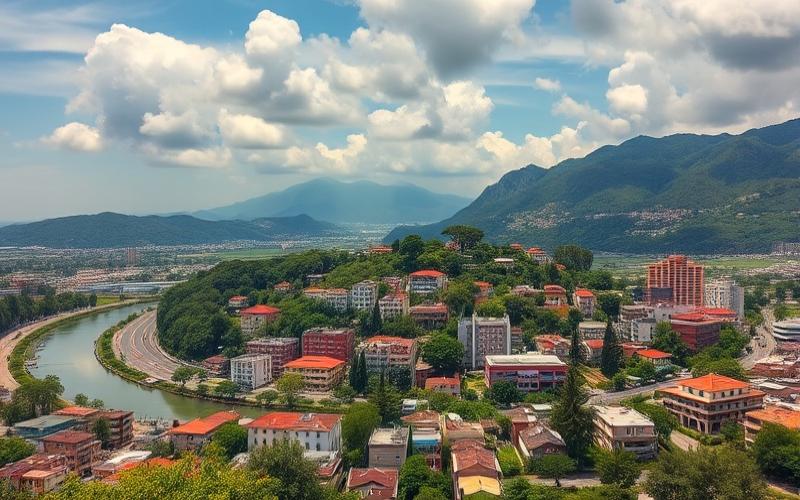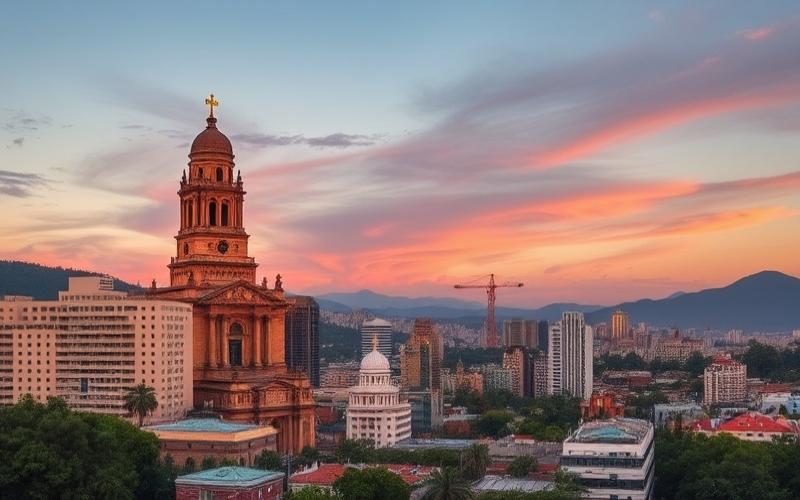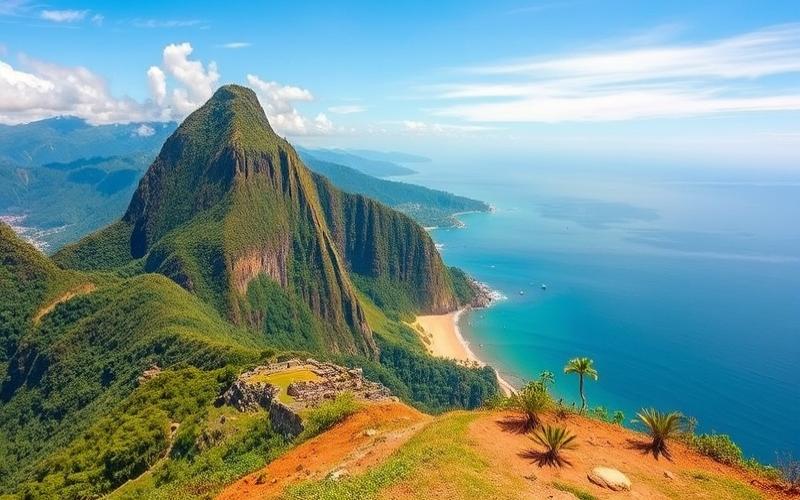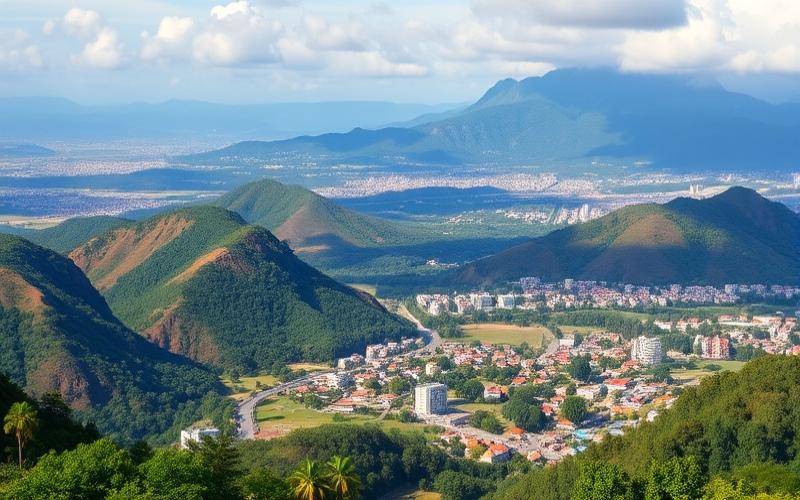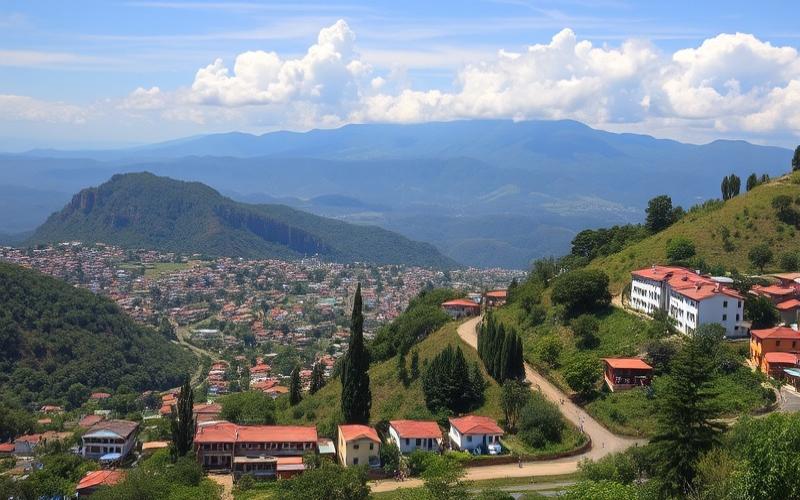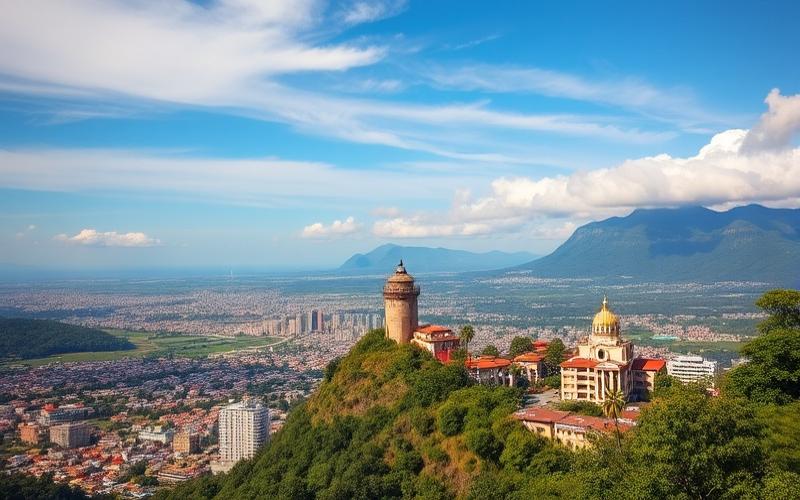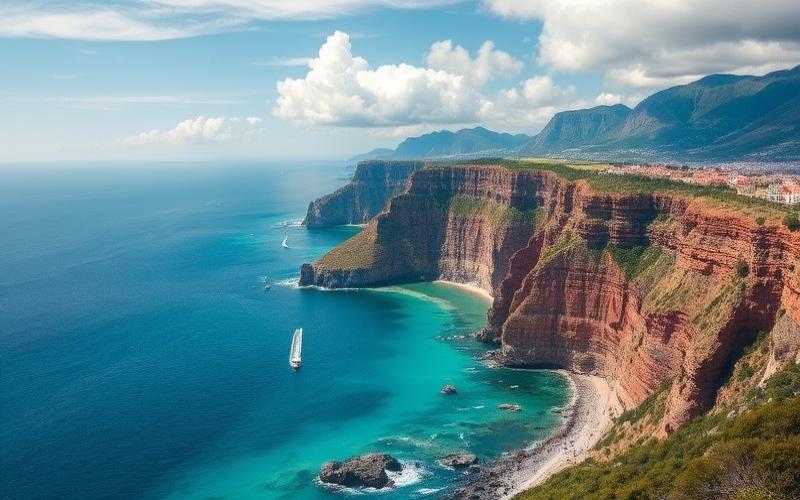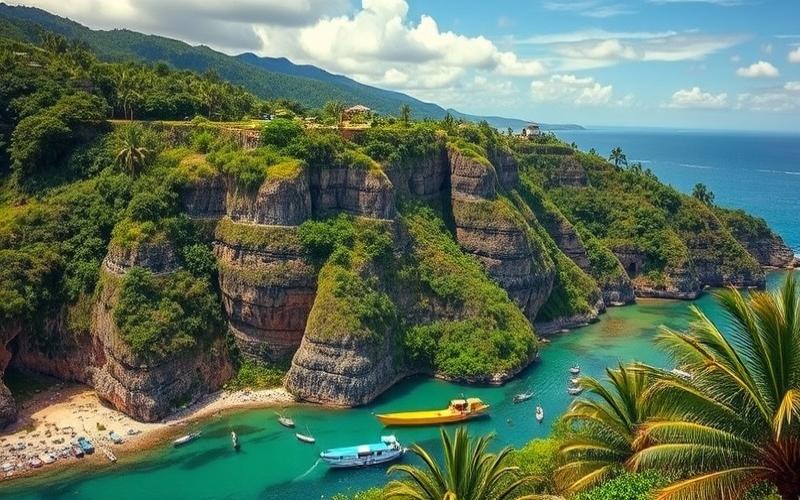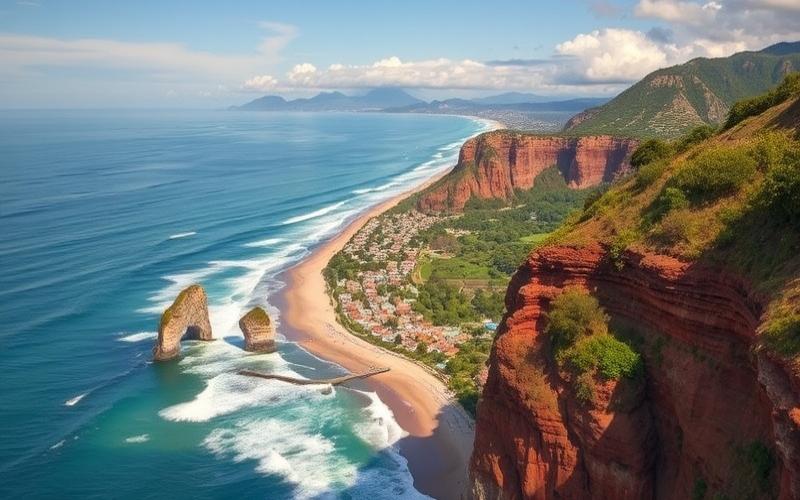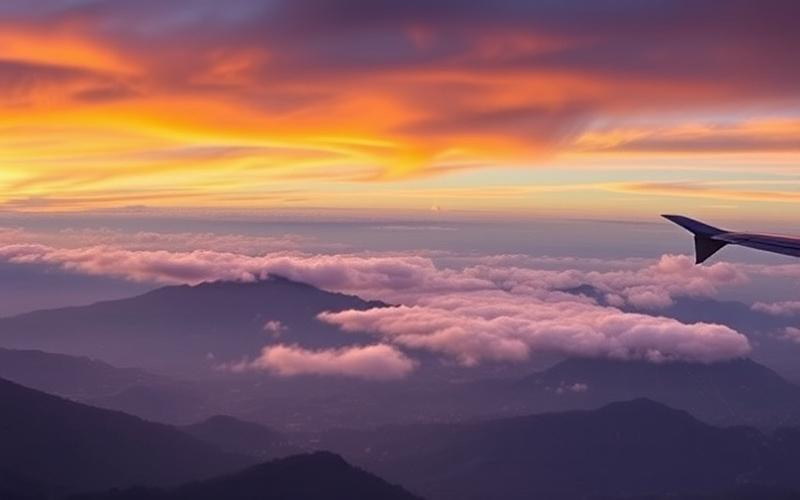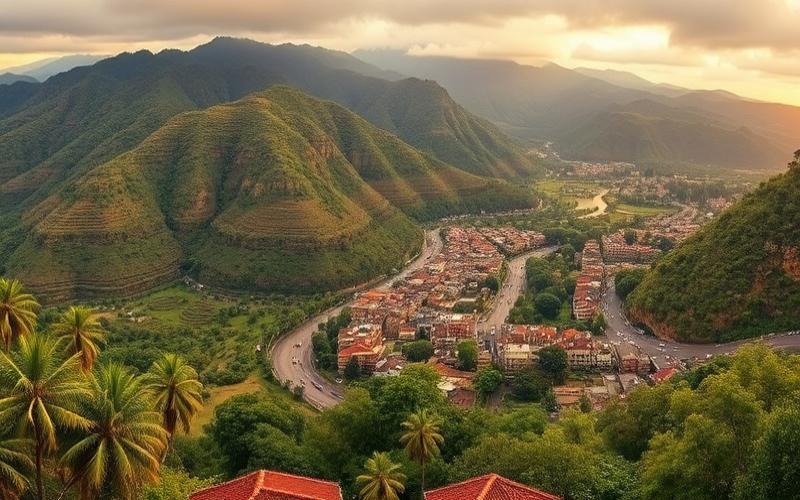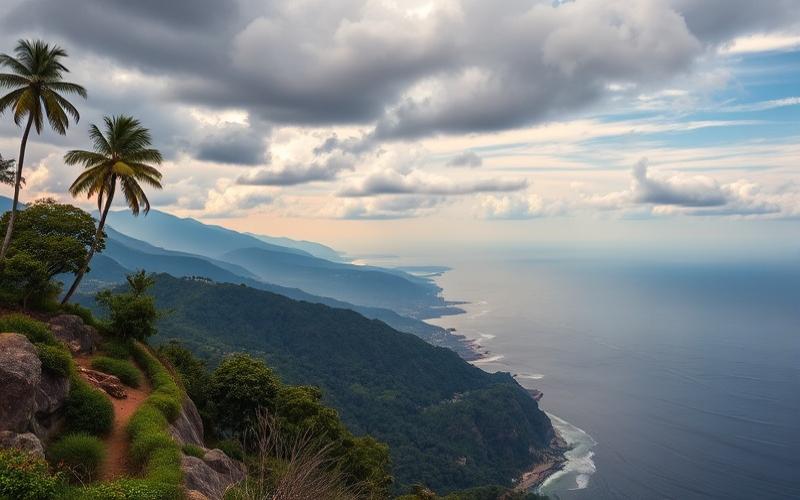
 Published on and written by Cyril Jarnias
Published on and written by Cyril Jarnias
El Salvador, a country with diverse landscapes and vibrant culture, captivates with its pristine beaches, imposing volcanoes, and lush tropical forests. However, adapting to the dynamic local climate can pose unique challenges for expatriates.
With distinct seasonal variations, ranging from the dry season to the rainy season, it’s essential to understand how to optimize climate conditions for successful integration. Learning to leverage local climate nuances will not only enable comfortable adaptation but also allow you to fully enjoy the unique experiences this country offers residents and visitors alike.
Let’s explore practical tips together that will facilitate this acclimatization.
Adapting to Seasons: Understanding El Salvador’s Climate
El Salvador has a tropical climate marked by two distinct seasons: the dry season (November to April) and the rainy season (May to October). Temperatures remain high and relatively stable throughout the year, with limited variations depending on altitude or proximity to the coast.
| Month | Min Temp (°F) | Max Temp (°F) | Precipitation (in) | Ocean (°F) |
|---|---|---|---|---|
| January | 72 | 91 | 0.1-0.3 | 82 |
| April | 77 | 93 | 2.4-4.6 | 84 |
| June | 75 | 90 | 15.8-20.7 | 86 |
| August | 75 | 90 | 12.0-16.1 | 86 |
| October | 73 | 88 | 14.7-20.4 | 84 |
| December | 73 | 91 | 0.4-1.3 | 82 |
Climate Characteristics
Dry Season (November-April):
- Very low precipitation, optimal sunshine, reduced humidity.
- Maximum temperatures between 90°F and 97°F depending on region.
- Ideal period for outdoor activities, hiking, visiting archaeological sites, and surfing.
Rainy Season (May-October):
- Heavy rainfall (up to 20 inches/month in some regions).
- Persistent heat (86°F to 93°F), humid atmosphere.
- Rain, often intense, occurs mainly in the afternoon or evening and can cause flash floods, landslides, and flooding.
- Increased risks of tropical storms or depressions, primarily from June to November.
Practical Tips for Expatriates
Appropriate Clothing:
- Choose lightweight clothing in cotton or linen to handle the heat.
- Keep a waterproof jacket or poncho ready for the rainy season.
- A hat, sunglasses, and sunscreen are essential year-round.
Staying Cool:
- Regular hydration, avoid going out during the hottest hours (12pm-3pm).
- Prefer ventilated or air-conditioned spaces.
Staying Dry:
- Always carry an umbrella or rain cape during the wet season.
- Wear closed, non-slip shoes to prevent falls during downpours.
Outdoor Activities:
- The dry season is the best time to explore the country, go hiking, surfing, or visit national parks.
- May to October are less suitable for outdoor activities due to rainfall, but nature is particularly lush and green.
Impact of Weather Events and Preparation
Torrential rains and tropical storms: These events can lead to power outages, impassable roads, and even evacuations.
Preparation:
- Follow local weather reports.
- Have a first aid kit and reserves of water and food.
- Prepare a backup plan in case of weather alerts.
- Ensure homes are well-protected against water (roofs, drains, windows).
The dry season (November-April) is the most pleasant and secure time to settle or travel in El Salvador, with warm, sunny, and low-humidity weather.
The rainy season (May-October) brings heat, high humidity, and increased risks of extreme weather events: vigilance and preparation are essential.
Good to Know:
Wear lightweight cotton clothing during the dry season and equip yourself with umbrellas and rain boots for the wet season; be cautious of local flooding during torrential rains and visit markets early in the morning when temperatures are still mild.
Choosing the Right Gear to Handle Weather Conditions
El Salvador, with its tropical climate, experiences two main seasons: the dry season from November to April and the rainy season from May to October. During the dry season, temperatures remain warm with little rainfall, while the rainy season is marked by high temperatures and heavy precipitation.
To handle these weather conditions, it’s essential to choose the right gear:
Gear for the Rainy Season
- Waterproof clothing: A poncho or lightweight raincoat is essential to protect yourself from intense rains.
- Suitable footwear: Waterproof shoes or hiking boots with good traction to prevent slipping.
- Waterproof backpack: To protect your personal items from the elements.
Gear for High Temperatures and Humidity
- Lightweight, breathable clothing: Fabrics like cotton or linen are ideal to promote perspiration and keep cool.
- Hats and sunglasses: To protect yourself from intense sun, even during the rainy season.
- Broad-spectrum sunscreen: Sun protection is crucial to avoid sunburn.
Gear for Outdoor Activities
For expatriates who enjoy hiking or surfing, here are some specific recommendations:
| Activity | Recommended Gear |
|---|---|
| Hiking | Sturdy hiking shoes, walking poles, backpack with hydration pockets |
| Surfing | Surfboard suited to local conditions, wetsuit for protection against coral and currents |
List of Additional Accessories
- Insect repellent: To protect against insects, especially during the rainy season.
- Water bottle: To stay hydrated during outdoor activities.
- First aid kit: For minor injuries during outdoor activities.
This gear and these accessories will allow you to fully enjoy outdoor activities while staying safe and comfortable facing El Salvador’s weather conditions.
Good to Know:
In El Salvador, where the tropical climate alternates between dry and wet seasons, prioritize lightweight, breathable clothing to handle the heat and humidity, as well as waterproof gear to face heavy rains; don’t forget essential sun protection and, for outdoor activity enthusiasts like hiking or surfing, choose non-slip shoes and specific equipment to stay comfortable and safe.
Strategies to Protect Your Health and Well-being Against the Local Climate
To protect your health and well-being as an expatriate in El Salvador, it’s essential to consider several factors related to the climate, local diseases, and air quality.
Precautions Against Tropical and Humid Climates
- Appropriate clothing: Wear lightweight, breathable, and loose clothing to avoid heat and humidity.
- Hydration: Drink plenty of water to stay hydrated, especially during physical activities.
- Sun protection: Use high-SPF sunscreen, wear a hat and sunglasses to protect your skin and eyes.
Recommended Vaccines
| Vaccine | Reason |
|---|---|
| Hepatitis A | High prevalence in water and food. |
| Hepatitis B | Risk of transmission through blood and bodily fluids. |
| Typhoid | Risk of contamination through water and food. |
| Rabies | High risk of rabies. |
| Yellow Fever | Depending on local conditions and travel to other at-risk regions. |
| DTP (diphtheria-tetanus-polio) and MMR (measles-mumps-rubella) | To keep basic vaccinations up to date. |
Prevention of Mosquito-Borne Diseases
- Dengue, Chikungunya, and Zika: Use repellents, wear covering clothing, and sleep under mosquito nets to avoid bites.
- Malaria: Although El Salvador has been declared malaria-free, prevention measures may be necessary in some regions.
Air Quality
Impact of active volcanoes: Volcanoes can degrade air quality, causing respiratory problems.
Solutions: Use air purifiers, wear masks, and follow local recommendations during volcanic crises.
Mental Health
- Integration into the local community: Participate in local activities to integrate and reduce cultural stress.
- Relaxing activities: Practice activities like meditation or yoga to manage stress.
- Establishing a routine: Maintain a daily routine for better emotional stability.
Good to Know:
Wear lightweight, long clothing, hydrate regularly, and protect yourself from mosquitoes to avoid dengue; use air purifiers to counter the impact of volcanoes, and engage in local activities to facilitate cultural adaptation and maintain good mental health.
Optimizing Home Design According to Climate
General Climate of El Salvador
El Salvador’s climate is tropical savanna, marked by two main seasons:
- Dry season: from November to April, little precipitation, pleasant temperatures, many sunny days.
- Rainy season: from May to October, abundant rainfall, high temperatures but more humid atmosphere.
Average temperatures in San Salvador range between 72°F and 93°F depending on the month. The hottest days occur between March and May, with peaks up to 97°F. Nights remain relatively mild, rarely below 70°F.
| Month | Min Temperature | Max Temperature | Season |
|---|---|---|---|
| January | 72°F | 91°F | Dry |
| April | 77°F | 93°F | Dry |
| June | 75°F | 90°F | Rainy |
| September | 75°F | 88°F | Rainy |
| December | 73°F | 91°F | Dry |
Tips for Living Space Design
- Prefer a north-south orientation for main rooms to limit direct sun exposure and benefit from prevailing winds.
- Multiply opposing openings to create air currents and maximize natural ventilation.
- Install louvers and adjustable shutters to modulate light and air entry while blocking heat.
- Use high ceilings and ceiling fans to promote air circulation.
- Plan roof overhangs and awnings to shade windows and exposed walls.
Thermal Insulation and Local Materials
- Use materials with high thermal inertia like brick, concrete, or adobe, which absorb heat during the day and release it slowly at night.
- Prefer thick walls and ventilated roofs (with an air gap under the roofing) to limit heat transfer.
- Install double roofs or green roofs to improve insulation.
- Use local wood for decorative elements or interior partitions, as it naturally regulates humidity.
Materials and Colors for Floor and Wall Coverings
- Choose terracotta tiles, ceramic, or natural stone, which remain cool underfoot.
- Avoid carpets and rugs that retain heat.
- Select light colors for exterior and interior walls to reflect light and limit heat absorption (white, beige, light gray).
- Use natural plasters based on lime or clay, which promote thermal and humidity regulation.
Gardening and Landscaping Solutions
- Plant dense foliage trees (mango, jacaranda, ceiba) to create shaded areas around the house.
- Install hedges and vegetated pergolas to filter sun and promote coolness.
- Use local drought-resistant plants like bougainvillea, agave, yucca, or cacti to limit water consumption.
- Create ponds or fountains to enhance the feeling of coolness through evaporation.
Outdoor Space Design
- Design shaded patios with shade sails, pergolas, or vegetated roofs.
- Install terraces in natural materials (wood, stone) that don’t retain heat.
- Plan areas with comfortable and ventilated furniture (hammocks, wicker chairs).
- Incorporate misters or small water features to cool the atmosphere on hot days.
Water Management and Rainwater Harvesting
- Implement rainwater collection systems (gutters, cisterns) for garden watering and non-potable domestic uses.
- Install natural filters (gravel, sand, aquatic plants) to purify collected water.
- Use drip irrigation to limit water loss and optimize plant watering.
Practical Tips for Maintaining a Comfortable and Sustainable Home
- Close shutters and curtains during the hottest hours.
- Open windows early in the morning and evening for natural ventilation.
- Place indoor plants to improve air quality and humidity.
- Regularly maintain natural ventilation systems.
- Promote the use of energy-efficient appliances and limit air conditioning to strict necessity.
- Prefer passive solutions (shading, ventilation, insulation) to limit ecological footprint and energy costs.
Important tip: For a comfortable home year-round in El Salvador, combine optimal orientation, natural ventilation, local materials, shading vegetation, and rainwater harvesting. These passive solutions significantly reduce dependence on air conditioning and contribute to a sustainable lifestyle.
Good to Know:
El Salvador experiences a rainy season from May to October and a dry season the rest of the year, with average temperatures of 75 to 86°F; prioritize north and south-facing windows, incorporate louvers and light colors to reduce indoor heat, and consider insulation with local materials like bamboo. Adopt local plants like bougainvillea to create shaded spaces while saving water and plan rainwater collection systems for sustainable management.
Disclaimer: The information provided on this website is for informational purposes only and does not constitute financial, legal, or professional advice. We encourage you to consult qualified experts before making any investment, real estate, or expatriation decisions. Although we strive to maintain up-to-date and accurate information, we do not guarantee the completeness, accuracy, or timeliness of the proposed content. As investment and expatriation involve risks, we disclaim any liability for potential losses or damages arising from the use of this site. Your use of this site confirms your acceptance of these terms and your understanding of the associated risks.


